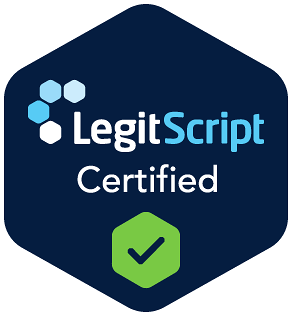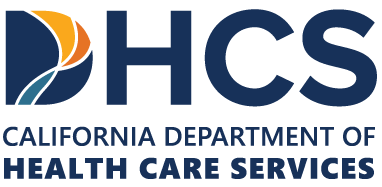The Truth About Rapid Detox: Understanding Risks, Benefits, and Alternatives
Introduction
For individuals struggling with addiction, particularly to opioids, the prospect of withdrawal can be a major barrier to seeking treatment. The physical and psychological symptoms of withdrawal can be intense, leading some people to consider rapid detox. This procedure promises to speed up the withdrawal process, and while it might seem appealing, it’s not the safest or most effective method for initiating long-term recovery.
This page outlines what to expect from rapid detox and shows you better ways to stop using drugs, alcohol, or prescription medications. You’ll also discover how to engage in comprehensive treatment that addresses all aspects of addiction and promotes whole-body healing.
What is Rapid Detox?
Rapid detox, also known as URD (ultra-rapid detoxification) or AAROD (anesthesia-assisted rapid opioid detoxification), is a medical procedure designed to accelerate the withdrawal process from opioids and certain other substances. The treatment has gained attention for its promise of helping people overcome the initial and most challenging phase of withdrawal in a compressed timeframe. While standard detoxification can take days or weeks, rapid detox usually lasts 4 to 8 hours.
The appeal of rapid detox is understandable: the prospect of sleeping through the most painful and uncomfortable withdrawal symptoms is attractive to those looking for a faster path to recovery. That said, this approach requires careful consideration of both benefits and substantial risks.
How Rapid Detox Works
During rapid detox, individuals undergo the following process:
- Medical screening to determine eligibility and identify potential risk factors.
- General anesthesia administration to render the person unconscious.
- Administration of opioid antagonists (typically naltrexone or naloxone) to trigger withdrawal.
- Medical monitoring throughout the accelerated withdrawal process.
- Recovery period under medical supervision.
The procedure aims to clear the body of opioids while the person is unconscious, theoretically allowing them to bypass the conscious experience of withdrawal symptoms. It is mainly used for opioid detoxification, including heroin, prescription painkillers (such as oxycodone, hydrocodone, and fentanyl), and methadone.
Some facilities have adapted the technique for alcohol and benzodiazepine dependence, although its application for these substances remains more controversial due to different withdrawal mechanisms and associated risks.
Efficacy of Rapid Detox
When evaluating the effectiveness and advisability of rapid detox, two separate questions arise:
- Does rapid detox successfully clear substances from the body?
- Does it lead to lasting recovery from drug or alcohol addiction?
Managing Withdrawal Symptoms
Research indicates that rapid detox can effectively clear opioids from the body’s receptors. Individuals awakening from the procedure typically have significantly reduced levels of the substance in their system. This physiological clearing does not necessarily translate to a complete absence of withdrawal symptoms, though. Many people still experience post-procedure symptoms, including:
- Gastrointestinal distress.
- Body aches and discomfort.
- Sleep disturbances.
- Anxiety and irritability.
- Cravings.
These symptoms may be less severe than in traditional withdrawal, but can still be disruptive and may last for days or weeks.
Comparison to Traditional Detox Methods
Traditional medically supervised detox typically takes 5 to 10 days for opioids, with symptoms managed through medications like buprenorphine, methadone, or supportive medicines for specific symptoms. While this approach takes longer, it allows for the careful titration of medications and continuous adjustment based on individual response.
Research comparing outcomes between rapid detox and traditional approaches has shown mixed results. A systematic review concluded that there was “no evidence that ultrarapid opioid detoxification under general anesthesia results in higher rates of abstinence than other approaches.“
Long-Term Success and Relapse Prevention
Perhaps most importantly, studies tracking long-term outcomes have not demonstrated superior relapse prevention rates for rapid detox compared to other methods. A key consideration is that rapid detox addresses only the physical dependence component of addiction, not the psychological, behavioral, and social dimensions that often drive substance use.
Without comprehensive follow-up treatment addressing these factors, relapse rates remain high regardless of the detoxification method used. This illustrates a fundamental principle in addiction medicine: detoxification alone is rarely sufficient for long-term recovery.
Risks and Dangers of Rapid Detox
The accelerated timeline of rapid detox comes with pronounced medical risks that must be carefully weighed against potential benefits.
Medical Complications
Documented risks include:
- Cardiovascular complications: Rapid withdrawal can stress the cardiovascular system, potentially causing arrhythmias, blood pressure spikes, and, in rare cases, cardiac arrest.
- Respiratory depression: Associated with the use of general anesthesia.
- Fluid and electrolyte imbalances: Can lead to dehydration and metabolic disturbances.
- Aspiration pneumonia: Risk of inhaling stomach contents while unconscious.
- Psychiatric complications: Severe anxiety, depression, and rarely, psychosis following the procedure.
Multiple studies have documented serious adverse events, including deaths, associated with rapid detox. A report from the CDC (Centers for Disease Control and Prevention) documents several fatalities linked to the procedure.
Psychological Considerations
Beyond physical risks, rapid detox may leave people psychologically unprepared for ongoing recovery. The abrupt transition can be disorienting, and individuals may experience intense emotional reactions as they adjust to their post-detox state without having developed coping strategies.
Limitations as a Recovery Solution
Perhaps the most pressing concern is that rapid detox may create a false impression that addiction can be cured quickly. This misconception can undermine commitment to the comprehensive, ongoing treatment typically required for sustainable recovery – addiction is treatable but not curable.
Evidence-Based Alternatives to Rapid Detox
Fortunately, several evidence-based alternatives offer safer and often more effective paths to recovery.
Medically Supervised Detoxification
Traditional medical detox provides around-the-clock monitoring while gradually transitioning individuals off substances. This approach allows for personalized medication management to address specific withdrawal symptoms while minimizing discomfort and risk.
Key benefits include:
- Continuous medical assessment and adjustment.
- Gradual adaptation of body and mind.
- Lower risk of severe complications.
- Opportunity to begin therapeutic engagement during the process.
MAT (Medication-Assisted Treatment)
MAT combines FDA-approved medications with counseling and behavioral therapies to treat substance use disorders. For opioid addictions, medications may include:
- Buprenorphine: Reduces cravings and withdrawal symptoms without producing the same high as other opioids.
- Methadone: Helps stabilize people by preventing withdrawal while blocking the euphoric effects of opioids.
- Naltrexone: Disrupts the effects of opioids, reducing the risk of relapse.
Research consistently demonstrates that MAT significantly improves survival rates, increases retention in treatment, decreases illicit drug use, and enables people to gain stability and function effectively in their daily lives.
Comprehensive Treatment Approaches
Effective treatment addresses the whole person through:
- Individual and group therapy.
- Behavioral interventions (CBT and DBT).
- Treatment of co-occurring mental health conditions.
- Family involvement and support.
- Lifestyle modifications and wellness practices.
The Importance of Comprehensive Care
Recovery from addiction requires addressing multiple dimensions of health and well-being. Detoxification by any method is merely the first step in a longer journey.
Sustainable recovery involves:
- Understanding and addressing the underlying drivers of addiction.
- Developing healthy coping mechanisms.
- Building supportive relationships.
- Creating a lifestyle conducive to long-term sobriety.
- Addressing co-occurring conditions (depression, anxiety, or trauma).
More extended engagement in treatment correlates with better outcomes, so recovery should be viewed as a process rather than a time-limited event.
How The Retreat Can Help
At The Retreat South Coast, we offer personalized, medically supervised detox to help you safely manage withdrawal and take the first step toward healing. Our care doesn’t stop there, though. We combine holistic and evidence-based treatments to support your mind, body, and spirit.
With a compassionate team and a supportive environment, we’re here to guide you toward long-term recovery.Are you ready to take the next step? If so, call us at (949) 612-4789.









